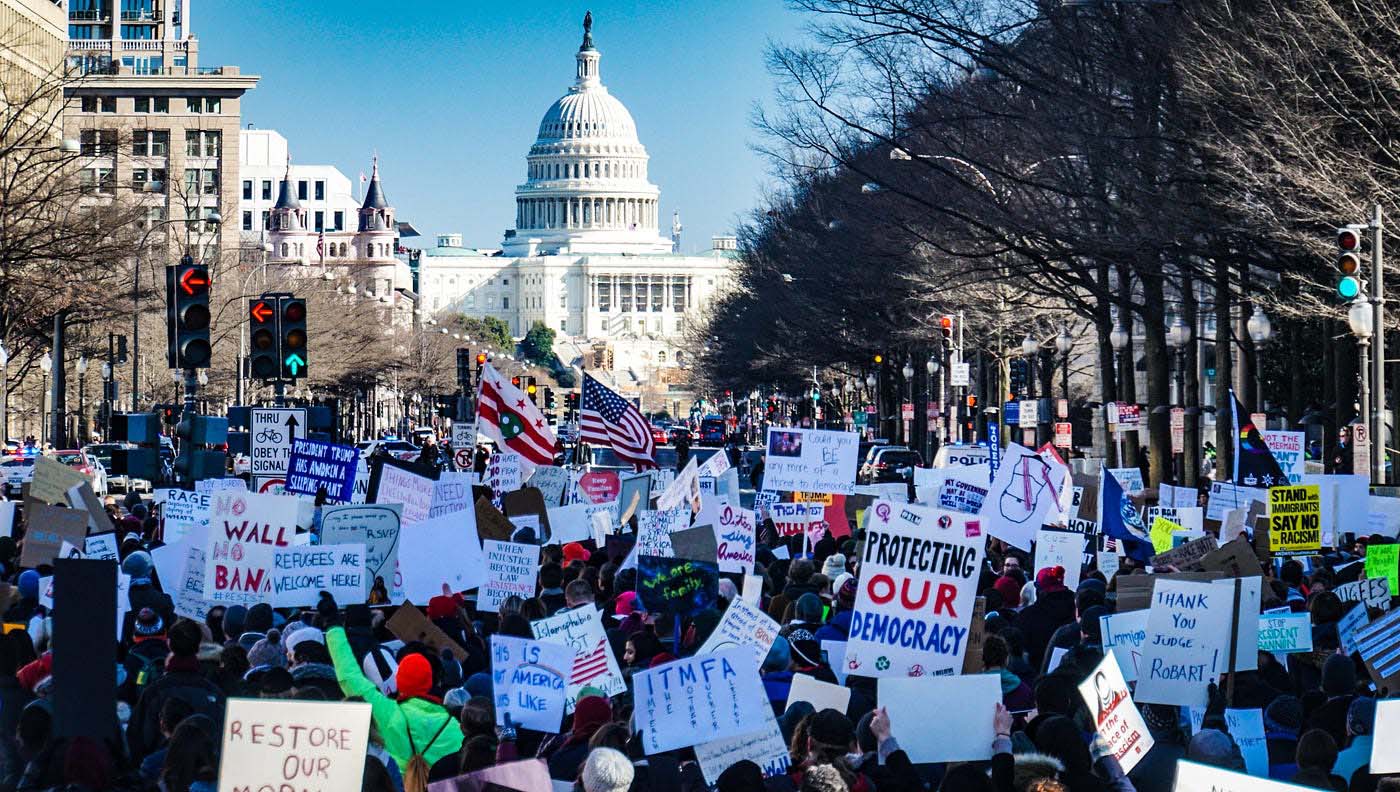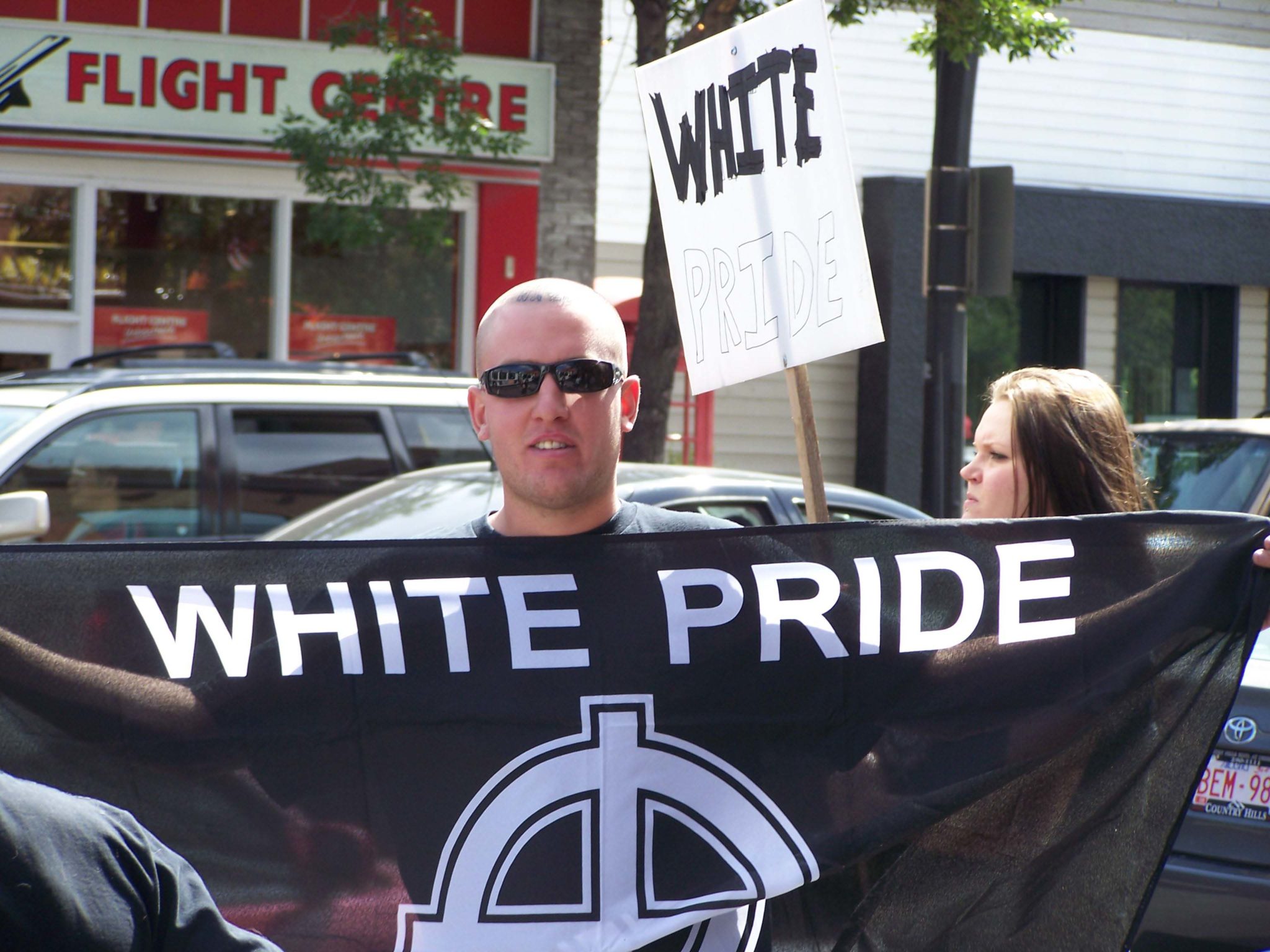- Opinion
- 01 Nov 24
US election: "Not all Trump supporters are Neo-Nazis, but almost all Neo-Nazis support Trump"

Niya Plynton on the continuing rise of far-right extremism in the US and how it ties into Donald Trump's presidential campaign.
The current United States political climate is wrought with extremism. Many Americans are susceptible to falling into Q-Anon, Neo-Nazism, and other such far-right movements that resemble religion as much as they do ideologies.
During the infamous January 6, 2021 attack on the Capitol in support of Trump, a large number of members of groups Proud Boys and Oath Keepers were present.
Trump's political existence thrives off of the rise in such extremism throughout the United States, which has pushed the Republican Party further and further to the right. Recently during a Trump rally, he threatened his dissenters and said, "They are so bad and frankly, they're evil. They're evil. What they've done, they've weaponised our elections," characterising Democrats as the "enemy from within."

Conversely, the Democratic Party drove further right in its support of Israel, with President Joe Biden sending a meek letter to the country, politely asking that they allow more humanitarian aid into Northern Gaza. Thus, extremism of one kind or another has gotten so prevalent that it has started to affect our daily lives. The alt-right makes its presence known at Trump rallies, LGBTQ+ events and outside women's health clinics.
In 2022, I was 18-years-old living in Providence, Rhode Island. I began taking an interest in leftist activism and punk music, as I wanted to make a difference. With activism came a community of like-minded people – I felt safe around them. I would frequently attend events at our local communist bookstore, Red Ink, which would host mutual aid fundraisers and a showing of my favourite movie, Princess Mononoke.
In February of 2022, Red Ink was attacked by a group of 50 Neo-Nazis from the Nationalist Social Club (NC131), a group that describes itself as "pretty much a frat, just racist."
TARGETING MINORITIES
I watched where I had first started organising as a teen, where I had played with my friends, been taught how to ride a skateboard, and where I listened to my friend play acoustic guitar. Now, the building was being attacked by violent extremists. I remember feeling an immense pain seeing the "SS" Neo-Nazi flag being flaunted, especially in a neighbourhood with a historically Jewish population. This, in the same neighbourhood where I – a queer biracial kid – dug snow forts with my neighbours, an orthodox Jewish family.
"They showed up on our sidewalk, banged on our glass windows, shouted horrible slurs, and attempted to assault our members," said Red Ink in a statement.
This was not the last of the harassment from NSC 131, who continually left flyers with pro-Nazi messaging on the doorsteps of notable community activists. In July 2022, two dozen NSC-131 members shouted slurs, passed out homophobic and anti-trans propaganda, and threw up Hitler salutes outside a drag queen story hour in Jamaica Plain.
In the same year, a white 18-year-old in Buffalo, New York entered a grocery store to kill as many black patrons as possible. The shooter was a frequenter of Neo-Nazi websites. Additionally, according to the ADL centre on extremism, there was an increase in white supremacist propaganda in 2022, with a 38% rise from the year before.

But why are there so many extremists? Last year, I spoke to someone who was involved with one of these hate groups, in order to gain insight into what prompted them to join.
"It initially started as just me finding a place to talk," they said. "It was political discourse that eventually led to the type of people who want to hear everyone's ideas, even Nazis." But they explained that, "If you let Nazis into any space, no matter what, they will find a way to poison it, take it over and make it toxic."
The activities of the group they were involved with included "a lot of trolling on posts and antagonising different groups of people to elicit a reaction" and "specifically targeting minorities, any group."
CULT-LIKE ATMOSPHERE
Extremism remains disturbingly pervasive in the current climate, and these groups begin to look more and more like religious cults as time ticks on. For Trump supporters, he is their 'charismatic leader', complete with memes likening him to Jesus. This is effective due to the overlap in support from extremist right wing groups and Christian evangelicals.
Another teenage student became involved with an extremist anti-feminist group after watching a YouTube video on the subject. They eventually found themselves in a group that encouraged racism and misogyny.
They explained that the group "celebrated violence against women and hatred towards people who've made false reports of sexual assault."
This extremism has been prevalent from the very start of the Trump campaign to take over the Republican Party; notoriously, in 2015, he claimed that Mexico was sending "rapists" into America, whilst there was also the Access Hollywood tape of him bragging about grabbing women's genitalia.
As election day nears, Trump's claims have become more and more demonstrably untrue – Mexico sending rapists into the US, Haitian immigrants eating pets in Springfield etc etc – but still his supporters attend his rallies in droves, wearing as much MAGA merch as possible.
In terms of the wider picture, not all Trump supporters are Neo-Nazis, but almost all Neo-Nazis support Trump. The cult-like atmosphere of these groups, formal or informal, allow him to be able to make any comment he wants without recourse, and drive the divide between Americans deeper. This has led to the rise in extreme views and the normalisation of such within the American psyche. And if he becomes President again? Who know where it all might end...
RELATED

- Opinion
- 17 Feb 23
The Message: Exposing the Lies of the Far Right

- Opinion
- 31 May 19








